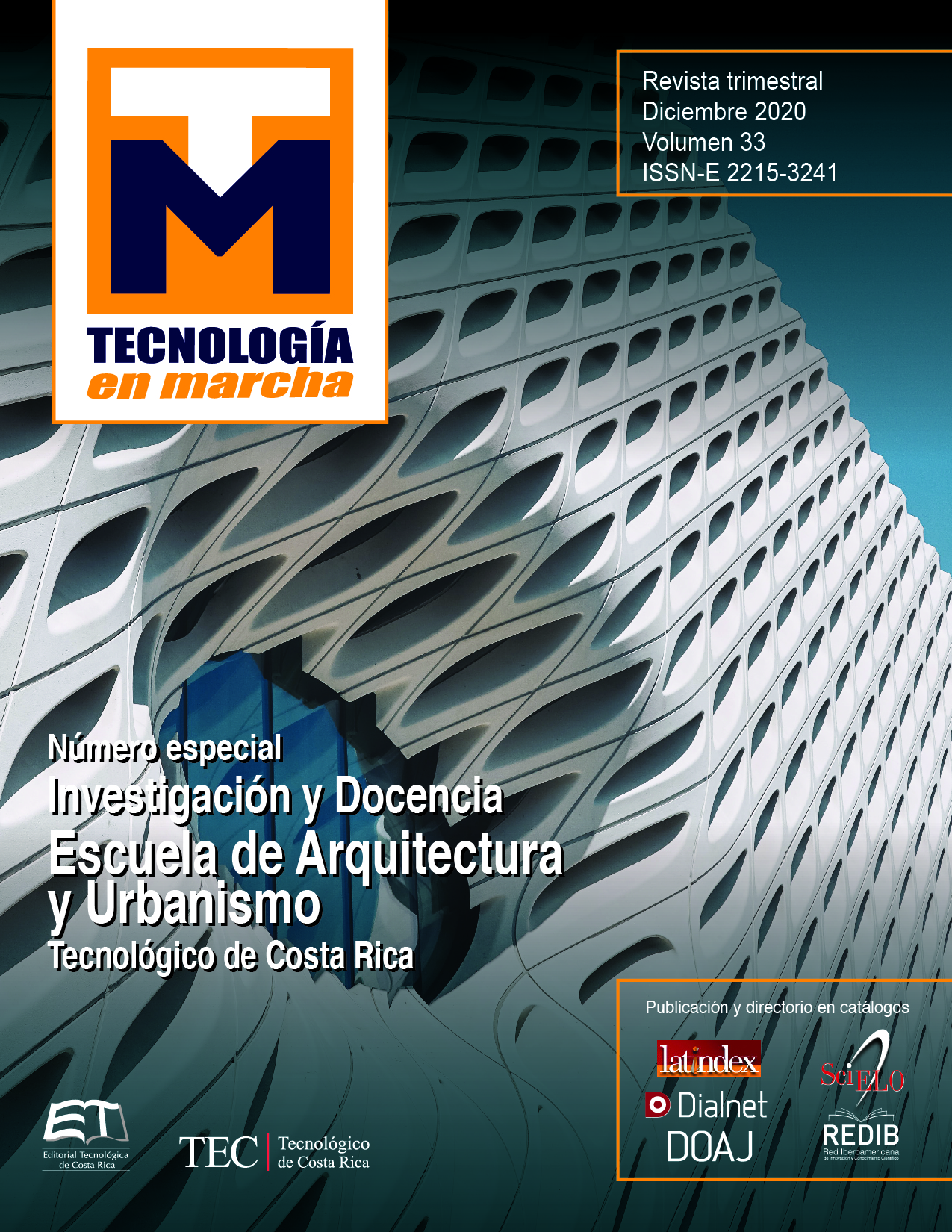Sudden workshops as a didactic strategy for the development of creativity in the initial processes of teaching architecture
Main Article Content
Abstract
Creativity is one of the most recognized skills of architects, therefore, its development is one of the main challenges during the learning process. Theories like those comparing the creative process to a black box have been supported for decades. In this, the designer obtains satisfactory results but is not able to base the inputs that led him to the final object or to replicate the steps in another project. On the contrary, another method that defines creativity as a glass box has emerged, where there is rigorous prior research that allows the designer to fill himself with resources and variables to start his projectual process.
Starting from this approach, it is common to see students, mainly those in the first year, overwhelmed by the blank paper and various factors that they still cannot interpret or relate. Therefore, this document presents a methodology that implements sudden workshops, or quick exercises in class, as a tool for students to make design decisions supported on their previous research and start their creative process. The proposal is based on the experience carried out in the Laboratory of Architecture II of the Architecture and Urbanism School of the Costa Rica Institute of Technology during the second semester of 2019.
Article Details

This work is licensed under a Creative Commons Attribution-NonCommercial-NoDerivatives 4.0 International License.
Los autores conservan los derechos de autor y ceden a la revista el derecho de la primera publicación y pueda editarlo, reproducirlo, distribuirlo, exhibirlo y comunicarlo en el país y en el extranjero mediante medios impresos y electrónicos. Asimismo, asumen el compromiso sobre cualquier litigio o reclamación relacionada con derechos de propiedad intelectual, exonerando de responsabilidad a la Editorial Tecnológica de Costa Rica. Además, se establece que los autores pueden realizar otros acuerdos contractuales independientes y adicionales para la distribución no exclusiva de la versión del artículo publicado en esta revista (p. ej., incluirlo en un repositorio institucional o publicarlo en un libro) siempre que indiquen claramente que el trabajo se publicó por primera vez en esta revista.
References
G. E. Corazza, «Potential Originality and Effectiveness: The Dynamic Definition of Creativity,» Creativity Research Journal, vol. 28, nº 3, pp. 258-267, 2016.
M. A. Runco y G. J. Jaeger, «The Standard Definitio of Creativity.,» Creativity Research Journal, vol. 24, nº 1, pp. 92-96, 2012.
N. Mayseless, A. Eran y S. G. Shamay-Tsoory, «Generating original ideas: The neural underpinning of originality,» NeuroImage, vol. 116, pp. 232-239, 2015.
K. Cameron, «Organizational Effectiveness,» Wiley Encyclopedia of Management, vol. 11, pp. 1-4, 2015.
K. E. Jennings, D. K. Simonton y S. E. Palmer, «Understanding Exploratory Creativity in a Visual Domain,» de Proceedings of the 8th ACM conference on Creativity and cognition, 2011.
N. E. NACIF, «Métodos de Diseño,» Universidad Nacional de San Juán, San Juan, 2015.
O. E. Guevara Alvarez, «Análisis del proceso de enseñanza aprendizaje de la Disciplina Proyecto Arquitectónico, en la carrera de Arquitectura, en el contexto del aula.,» Universidad Autónoma de Barcelona, Bellaterra, 2013.
L. M. Franco Cárdenas, I. R. Gutiérrez Ruiz y M. Navarro Velázquez, «LA CREATIVIDAD EN LA FORMACIÓN DEL,» de La expresión y la representación como lenguaje del diseño, Guadalajara, Universidad de Guadalajara, pp. 189-213.
P. Galle, «Design rationalization and the logic of design: a case study,» Design Studies, vol. 17, nº 3, pp. 253275, 1996.
P. Galle y L. B. Kovács, «Replication protocol analysis: a method for the study of real-world design thinking,» Design Studies, vol. 17, nº 2, pp. 181-200, 1996.
C. E. Burgos, «La naturaleza cognitiva del proyecto y la crisis en la concepción heredada en la enseñanza de la arquitectura,» Arquitecturas del sur, vol. 33, nº 48, pp. 44-55, 2015.
M. C. Chong Garduño, A. Carmona Olivares y M. A. Pérez Hernández, «El análisis de sitio y su entorno en el desarrollo de proyectos arquitectónicos y urbanos,» 2012.

